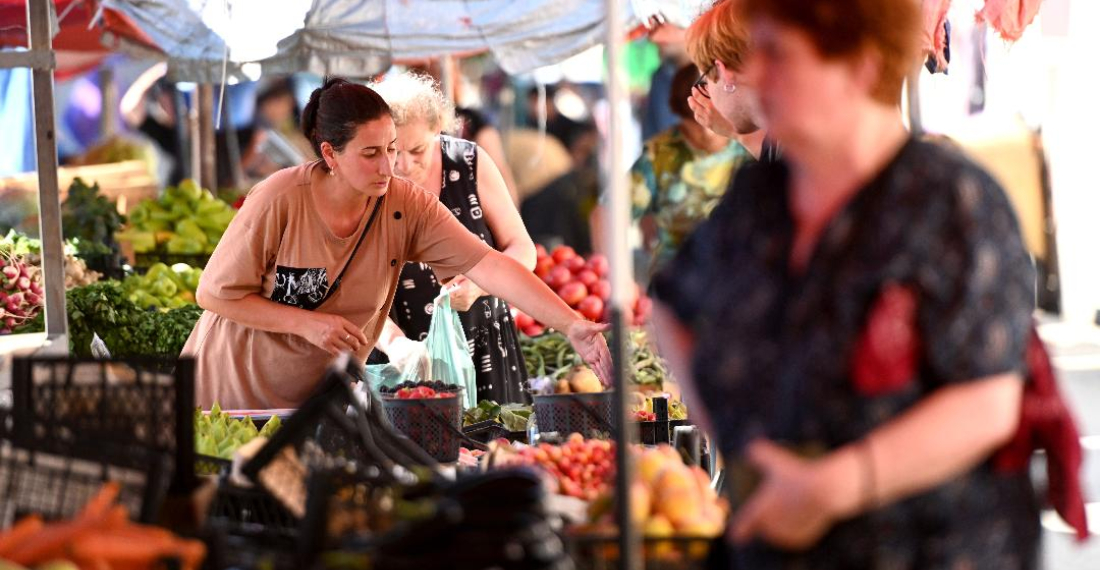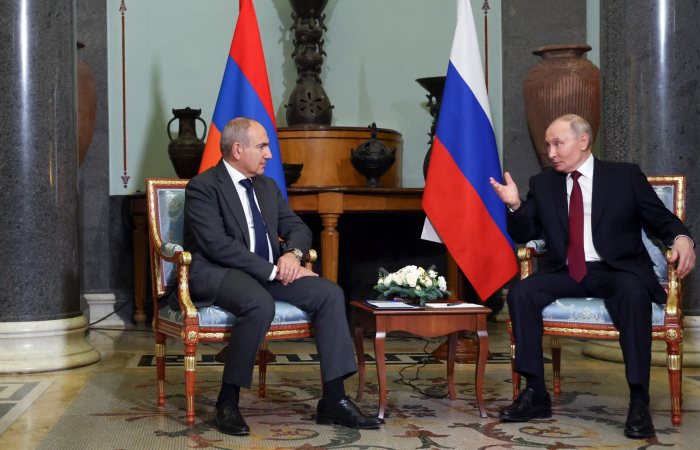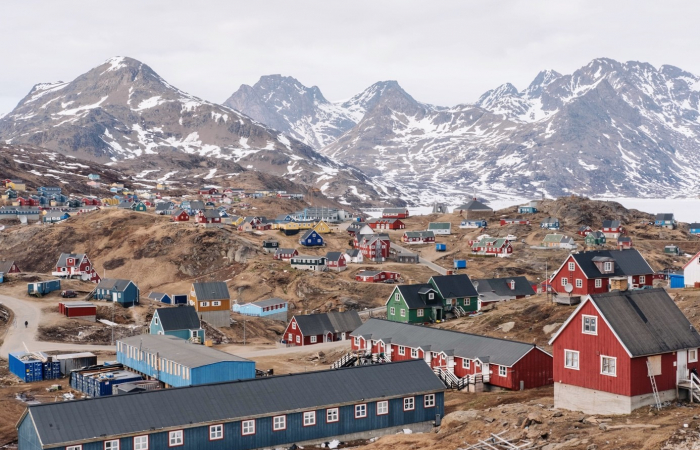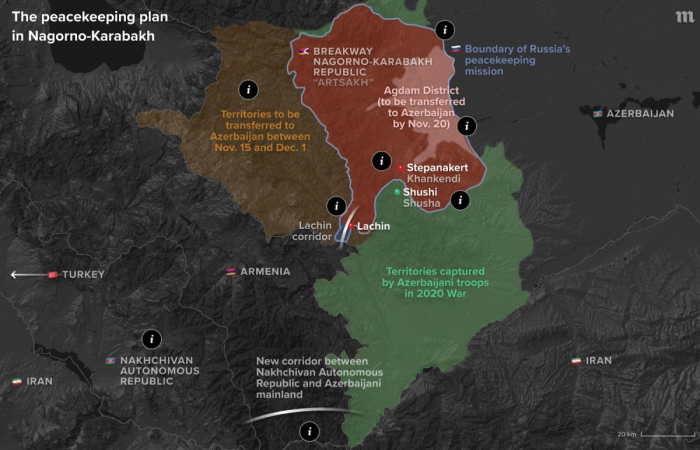Armenian passport control at the Bagratashen border checkpoint was confused and chaotic, quite unlike the experience on the other side at Sadakhlo in Georgia. Instead of the few minutes it should have taken, it took over twenty. It never had in the past. Perhaps preparations for a visit by the European Union delegation taking place just a few days later to develop a much anticipated Visa Liberalisation Action Plan (VLAP) had preoccupied them.
Nonetheless, the experience did highlight how hopes to one day establish markets on another border – that between Armenia and Azerbaijan – might not be as simple as some hope. It is a matter of border security. For now, we can only say that at least Armenians and Azerbaijanis won't require visas thanks to a 1992 Commonwealth of Independent States (CIS) agreement on free movement. They are only currently prevented from doing so because of a still ongoing conflict and national security.
The Bagratashen-Sadakhlo border crossing will be familiar to anyone who has traveled between Tbilisi and Yerevan. My visit, however, was to talk to residents of Bagratashen, one side of a once bustling cross-border market. I had travelled from the Sadakhlo side to the crossing after hitching a ride with an Armenian motorist heading the same way. He had pulled into Sadakhlo for petrol en route. The ethnic Azerbaijani attendant nonetheless conversed with him in Armenian.
My driver from the Noyemberyan municipality in Armenia was in Sadakhlo to buy auto parts. It was the main route for lorries transporting goods and passenger traffic between the two. In the early 1990s, Armenians and Azerbaijanis traded daily at the Bagratashen-Sadakhlo market, hosted by the Georgians, even while conflict raged in Karabakh. Bagratashen and Sadakhlo, inhabited respectively by Armenians on one side and ethnic Azerbaijanis on the other, are just 600 metres apart at their closest.
Before it was closed by the Tbilisi authorities in 2006, there had also been numerous cases of smuggling, corruption, prostitution, trafficking, and sometimes killings.
In September 1994, for example, an explosion killed 14 people from all ethnic groups trading on the Bagratashen side. The local authorities said that it was caused by a landmine placed in a suitcase. In 2002, I had visited one of those injured in the blast, a little girl named Armine, aged two at the time of the explosion, whose torso and right arm were hit by shrapnel. Back then, her mother said that there had been shooting in the market and as people fled in panic, the mine detonated.
Though one online source charges that it was a “suicide bombing,” locals did not confirm this when I visited last week and regarded it as a tragic accident. It was then that I encountered Armine again by chance, now aged 33 and working in a local supermarket. Her colleagues said that clashes between competing mafia groups were not uncommon though for Armine the reason probably didn’t matter. She still bore the scars, her elbow was still missing, and her right arm remained withered.
What has changed, however, is that the area between the Bagratashen crossing and the village itself has developed considerably. With the market long since closed, supermarkets, hotels, pharmacies, gas stations, and foodcourts have sprung up instead, negating the need for it to reopen. Nonetheless, those old enough to so remember the old market fondly. Some, like my driver, maintain contacts with their ethnic Azerbaijani neighbours even today.
Another in his late twenties waxed lyrically about a close friend there, who he referred to as his “halal akhper (brother).” It is not uncommon to encounter ethnic Azerbaijanis in Sadakhlo speaking Armenian, he confirmed, and he was also familiar with two of the nearby co-inhabited ethnic Armenian-Azerbaijani villages on the Georgian side as well as one further along the road to Tbilisi. Not everyone agreed, of course, but one woman also hated Nikol Pashinyan and wanted him imprisoned.
Even so, in general, most were indifferent to the Armenian Prime Minister and none were perturbed by last year's demarcation of the Armenia-Azerbaijan border some 50 km away. Neither did the recent news that it would continue closer by.
Instead, and as Radio Free Europe also discovered reporting from the southern most Siunik region, most wanted peace and stability though none expected it to come anytime soon. One shop keeper retorted that it would likely happen only when the United States and Russia want it to happen. What might happen next in Ukraine could affect that. But whether in lieu of a final breakthrough in bilateral talks between Armenia and Azerbaijan that is the case remains unclear.
More to the point, however, is that while some usually desk-bound analysts ponder the opening of markets on the shared border to the east if it does happen, few appear to have visited such sites despite the need for further research. Even at the Lilo market on the outskirts of Tbilisi, there remain cases of business-related violence, sometimes including contract killings as there was last year.
For any future border markets to prove viable, not only will there need to be buy-in from local communities and businesses, but also the full involvement of Armenian and Azerbaijani customs, border guards, law enforcement, and their national security services. It would also be helpful to re-examine the example of the former Bagratashen-Sadakhlo market as well as those established in other conflict zones between formerly warring sides. The potential is at least there.






